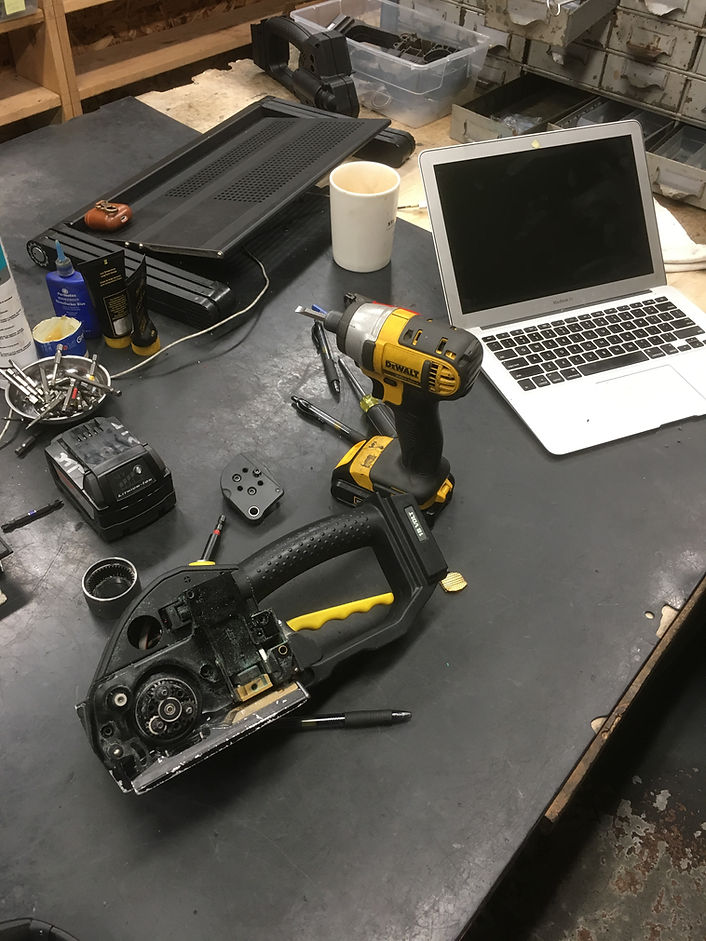top of page
We service All Major Brands of Equipment
tool repair ship to
01
Receive Tool -
Check in to STP system
02
Disassemble tool to determine issues and estimate repairs
03
Send a FREE
cost estimate to
the customer
04
If approved begin repair or order parts
05
Finish repair -
test the repaired tool extensively, return tool to customer
parts
spare parts

Thousands of in-stock parts
Competitive pricing on all in-stock and special order parts

For expedited parts pricing
email inquiry to:
orders@strongtreeproducts.com
or call 360-949-7175



We offer the BEST pricing on standard wear parts
FAQS
FREQUENTLY ASKED QUESTIONS
-
How well do the battery strapping tools hold up?Battery tools are very durable and reliable when treated well. The longevity of the tools primarily depends on the environment that they are in and the treatment from the operators. In a clean inside warehouse the tools are going to last a long time and use very little wear parts. An outside environment where moisture and dirt is present is going to shorten the life of the parts and cause internal issues. Often times we see where wet strapping causes moisture and debris to get inside of the tool and degrade the bearings and other parts.
-
Why are battery tools so expensive compared to manual strapping tools?The internal components of battery tools consist of circuit boards, motors and high quality parts related to tensioning strap at a high level. These parts are expensive to manufacture and develop. In general terms the higher the tension rating of a tool, the higher the cost. General duty, lower tension battery tools for load containment such as keeping products on a pallet, attaching corner board to loads etc...are lower cost. High tension tools such as containing units of lumber and steel loads are going to cost more and generally are used with wider and thicker strapping.
-
Do battery tools get the strapping tight enough?Typically the most expensive part on a battery tool is the motor that drives the tension wheel. The motors are very good quality and get the strap extremely tight. Generally speaking the more expensive the tool, the heavier duty and tighter the strap is applied. The battery tools do a nice job of applying equal tension on units where a human factor varies due to worker fatigue over time.
-
How does the tool weld strap together, and is it strong enough to hold in transit?There is sometimes a single motor and sometimes two motors in a tool that perform the operations of that tool. In a 2-motor tool one motor drives the tension wheel and one motor operates the welding mechanism. In single motor tools the one motor does both. In either case the tool motor vibrates two high quality metal plates called weld pads against the top and bottom straps creating extreme friction and heat. This process welds, or melts the strap together in a process called friction welding. The weld efficiency of this weld is higher than a metal clip and usually exceeds 75% of the strap's break strength. If the tool is operating properly and a good weld all the way across the strap is achieved then the holding strength is good up to the break strength rating of the strapping you are using.
-
Can I fix the strapping tool myself?The short answer is that it depends on the technical proficiency of the person repairing the tool. The manual tools are fairly straight forward in that they are mechanical and someone with proficiency in working on basic equipment should be able to repair the manual tools. There are always idiosyncrasies with any tool that may arise but overall most manual tools can be repaired by general repair folks. Battery and pneumatic tools are more difficult in that they have sometimes hundreds of little parts that have to replaced in a certain order for them to work correctly. And the battery tools have circuit boards that can be a challenge. Another more difficult piece of the repair is putting all the wires back inside the cover and making sure they aren't damaged in any way. There are techniques that have to be used in order for this to be done correctly.
-
What does it mean that StrongTree is a certified tool repair center?To become certified as a tool repair center on any brand of tools our technicians have to spend at least 40 hours, and sometimes up to 80 hours of on site training at the manufacturers tool centers. StrongTree sends each tech back to the manufacturers tool/warrant center for this training where they tear down tools to the frame and rebuild them. There they learn all the maneuvers and techniques needed to properly assess the problem, disassemble to tool completely, and put the tools back together after a repair. Finally they are trained in testing the tool completely so that they can make sure it is working after a repair before it isn't back to the customer.
-
Why can tool repairs sometimes be costly?The replacement parts are intricate and expensive. One of the reasons is that we are dealing with high quality metals and electronics in some cases. In order for tools to pull tension properly and have a decent life span the parts have to be made of top quality materials which can add up. Additionally depending on the tool, the technician has to disassemble and diagnose issues inside the tool which takes time. StrongTree bills time in 15 min increments so as to save as much money as possible for the customer. In some cases such as some battery and pneumatic tools take 2-3 hours to totally repair from start to finish.


repair questions
bottom of page






